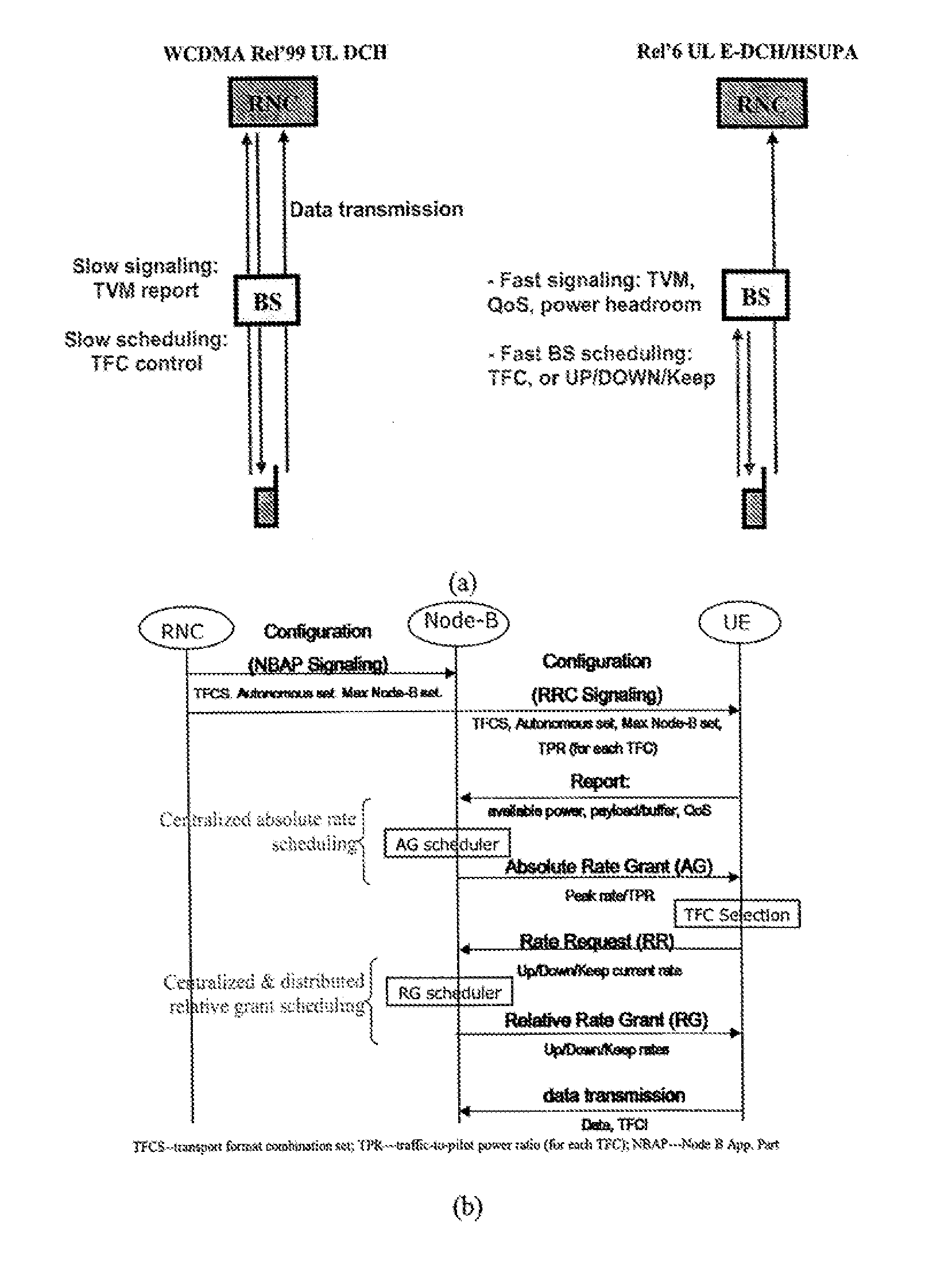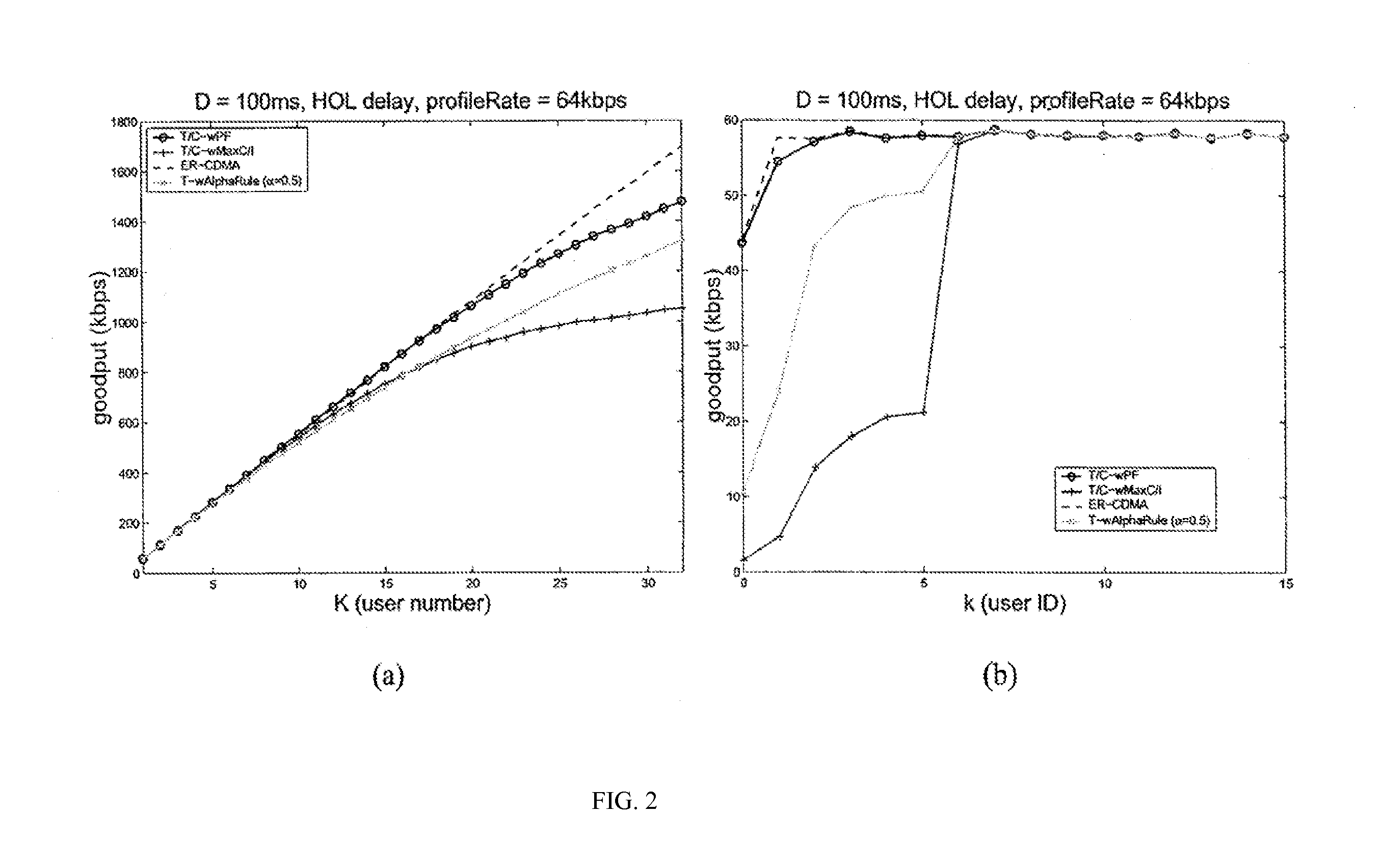Uplink Scheduler for Cellular Packet Access
- Summary
- Abstract
- Description
- Claims
- Application Information
AI Technical Summary
Benefits of technology
Problems solved by technology
Method used
Image
Examples
Embodiment Construction
[0026] The invention is directed to a centralized uplink scheduling framework in which several processes are considered for real-time packet services in the Third-Generation (3G) and beyond cellular systems. In cells of such systems, multiple users may access the base station through code-division multiple access (CDMA), time-division multiple access (TDMA), or their hybrid. Each user has limited transmission power. The total received power, at the base station from all users, is constrained by an upper threshold of Rise-over-Thermal (RoT). An analysis shows that given each user's information, such as instantaneous channel state, power headroom, and traffic backlog, a centralized TDMA / CDMA-hybrid scheduler may balance efficiently between power consumption, goodput or effective throughput, and packet delay or losses. Compared with purely TDMA or CDMA schedulers, the inventive hybrid scheduler delivers higher goodput (in bits / s) or higher efficiency (in bit / s / watt). The inventive sche...
PUM
 Login to View More
Login to View More Abstract
Description
Claims
Application Information
 Login to View More
Login to View More - R&D
- Intellectual Property
- Life Sciences
- Materials
- Tech Scout
- Unparalleled Data Quality
- Higher Quality Content
- 60% Fewer Hallucinations
Browse by: Latest US Patents, China's latest patents, Technical Efficacy Thesaurus, Application Domain, Technology Topic, Popular Technical Reports.
© 2025 PatSnap. All rights reserved.Legal|Privacy policy|Modern Slavery Act Transparency Statement|Sitemap|About US| Contact US: help@patsnap.com



